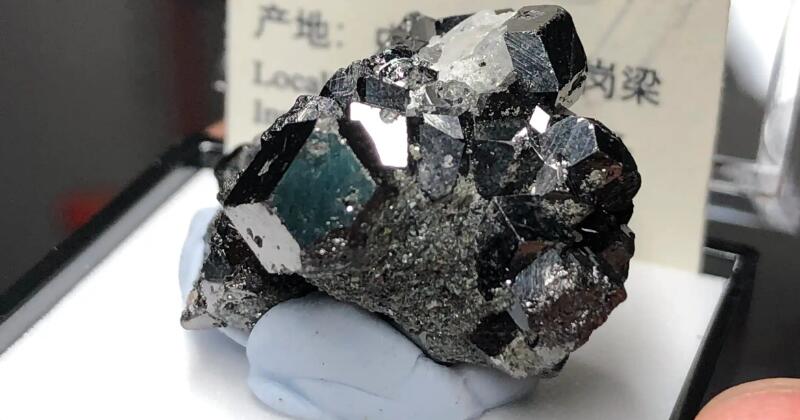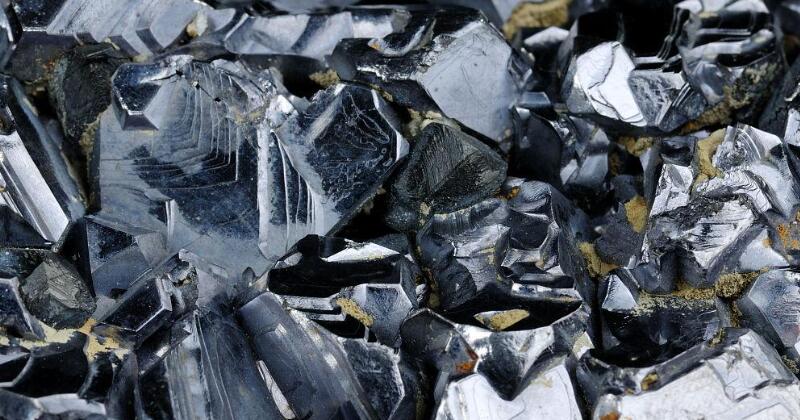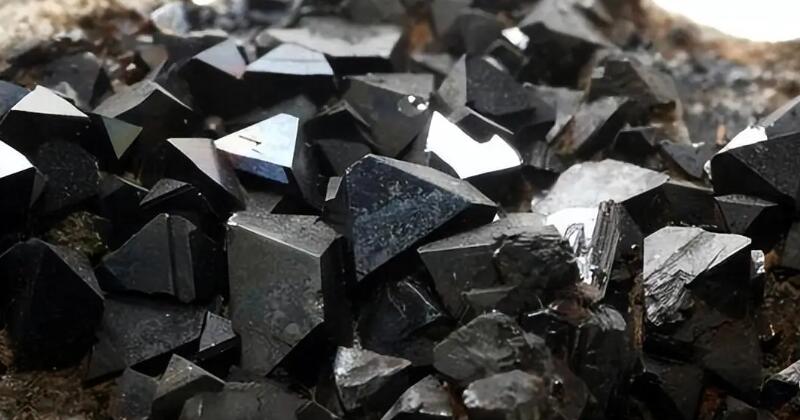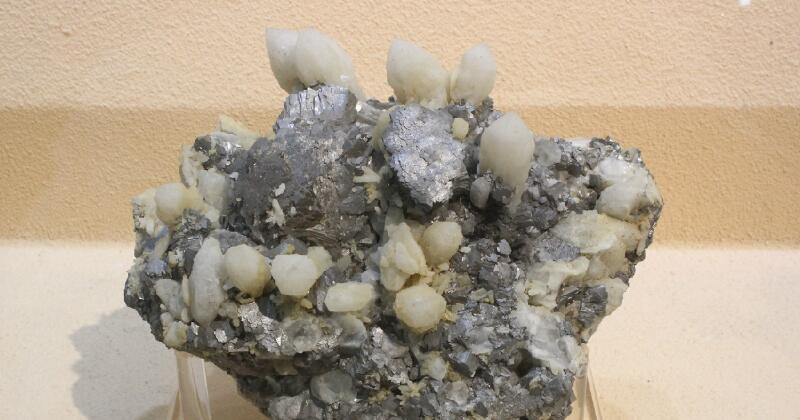Magnetite meaning, crystals, properties and uses
 Xingaonai
Xingaonai
![[list:date style=M.d,Y]](/images/date.png) Apr.05,2025
Apr.05,2025
 387
387
If you want to know more details about equipment, solutions, etc, please click the button below for free consultation, or leave your requirements!
As one of the most widely distributed iron oxides in nature, magnetite has a unique cubic crystal structure that hides many secrets. In this crystal formed by the dense accumulation of oxygen ions, iron ions are distributed in the gaps between tetrahedrons and octahedrons like a precise puzzle - the octahedral sites accommodate both divalent and trivalent iron ions. This inverse spinel structure directly creates its density of up to 5.2g/cm┬│ and its iconic strong magnetism. In the field of industrial ironmaking, about 70% of the magnetite mined worldwide each year flows to blast furnaces. After being purified by flotation, its theoretical iron content can reach 72.4%, which is nearly 10 percentage points higher than hematite.

Don't be fooled by its dull iron-black appearance, it is a star material in the field of nanotechnology. Last year, a research team at Johns Hopkins University in the United States successfully achieved targeted delivery of anti-cancer drugs using 10nm magnetite particles. Experimental data showed that the drug concentration at the tumor site increased by 3.2 times. In terms of medical imaging, the MRI contrast agent developed by Bayer in Germany contains 1.5 mg of magnetite nanoparticles per milliliter, which can increase the contrast of T2-weighted images by 40%.
The data in the field of environmental governance is even more exciting. The water treatment laboratory of Tsinghua University in my country found that after loading magnetite nanoparticles on the surface of activated carbon, the adsorption capacity of arsenic-containing wastewater jumped from 3.2 mg per gram to 7.8 mg, doubling the treatment efficiency while maintaining a recovery rate of more than 92%. In terms of energy transformation, in the iron-steam hydrogen production device developed by Japan Steel Engineering Holdings, magnetite is used as a redox medium, and the hydrogen production in a single cycle can reach 12.6L/kg, and the energy conversion efficiency has exceeded the 65% mark.
However, this black mineral also has a delicate side. Magnetite specimens stored for more than three years often show surface reddening, which is a hematite film generated by oxidation. Monitoring data from the Nanjing Geological Museum show that in a room temperature environment with a humidity of 60%, the annual oxidation rate of magnetite can reach 0.3mm thick. Interestingly, this "metamorphic" process was actually used by paleomagnetists, who successfully reconstructed the position offset trajectory of the Earth's magnetic poles during the Jurassic period by analyzing the remanent magnetic direction of magnetite in different geological layers.
The following is a detailed answer about magnetite (FeŌéāOŌéä), covering its meaning, crystal structure, characteristics and uses. The content has been structured:
1. Meaning and basic concepts
Magnetite is a naturally occurring iron oxide mineral with the chemical formula FeŌéāOŌéä (iron tetroxide), belonging to the spinel family of minerals. It is one of the important iron ores, named for its strong magnetism, and was called "Ci Shi" in ancient China (the Compendium of Materia Medica records that it can attract iron like a loving mother attracting her children).
2. Crystal structure
Crystal system and symmetry: It belongs to the isometric crystal system (cubic crystal system), and the space group is Fd3m.
Structural characteristics:
Spinel structure, composed of tightly packed oxygen ions, and iron ions filled in the gaps between tetrahedra (Fe┬│Ōü║) and octahedra (Fe┬▓Ōü║ and Fe┬│Ōü║).
There is an inverse spinel structure, that is, divalent iron (Fe┬▓Ōü║) occupies the octahedral site, and trivalent iron (Fe┬│Ōü║) is dispersed in the tetrahedral and octahedral sites.
Morphology: Common octahedral or rhombic dodecahedral crystals, and can also be granular or blocky aggregates.
3. Physical and chemical properties
(1) Physical properties
Color and luster: Iron black to grayish black, metallic to semi-metallic luster.
Hardness: 5.5-6.5 (Mohs hardness).
Density: 4.9-5.2 g/cm┬│.
Magnetism: It has strong ferromagnetism and is one of the most magnetic minerals in natural minerals. It can be attracted by magnets or act as a natural magnet.
Cleavage and fracture: Incomplete cleavage, shell-like fracture.
(2) Chemical properties
Stability: It is easily oxidized to hematite (FeŌééOŌéā) in air, especially in high temperature or humid environment.
Solubility: Insoluble in water, but soluble in concentrated hydrochloric acid.
Conductivity: Semiconductivity, low resistivity.
4. Main uses
(1) Industrial field
Ironmaking raw materials: About 70% of the world's magnetite is used to smelt pig iron and steel, and the grade needs to be improved through ore dressing (theoretical value of 72.4% iron content).
Magnetic materials:
Preparation of permanent magnets, audio tapes, magnetic storage media (such as early hard disks).
Modern applications: Nano-magnetite is used in biomedical fields such as targeted drug delivery and MRI contrast agents.
Catalyst: Used as a catalyst carrier in ammonia synthesis and wastewater treatment (such as Fenton reaction to degrade organic matter).
(2) Environment and energy
Heavy metal adsorption: Nano-magnetite can adsorb pollutants such as arsenic and lead in water.
Hydrogen production technology: Participate in chemical cycle hydrogen production reactions (such as iron-steam process).
(3) Other uses
Pigment: Black natural pigment (needs to be stabilized to prevent oxidation).
Feng Shui and collection: Natural magnetite is believed to have energy regulation effects and is used in handicraft production.
5. Supplementary knowledge
Differences from similar minerals:
Hematite (FeŌééOŌéā): red or steel gray, non-magnetic.
Titanium magnetite: contains titanium, has weak magnetism, and is the main mineral in vanadium-titanium magnetite deposits.
Geological significance: The magnetic record of magnetite can be used to study the changes in ancient geomagnetic fields ("paleomagnetism").
The above content combines the perspectives of mineralogy, materials science and industrial applications. If a certain aspect needs to be further explored (such as the details of nanomaterial applications), additional explanations can be provided.
Author: Xingaonai
Reprint address: http://xingaonai.cn/mineral-profile/magnetite-meaning-crystals-properties-and-uses.html
 +86 15637191339
+86 15637191339 sale@xingaonai.cn
sale@xingaonai.cn




 Message
Message Chat Now
Chat Now




















